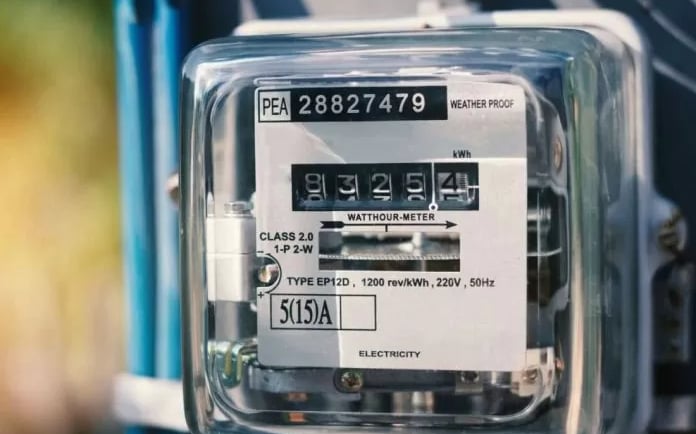Trump’s AI Action Plan Spurs Energy and Semiconductor Ambitions in Ohio
Expanded Power Purchase Agreements, Behind-the-Meter Innovation Could Give Ohio a Competitive Edge in AI Race
NEWS
Nancy Carrington
7/24/2025


By Nancy Carrington
Staff Writer, eGen News
COLUMBUS, Ohio — The Biden-era regulatory sprawl may be shrinking in the rearview mirror, but if President Trump’s recently released AI Action Plan succeeds, it could mark a turning point in the race for technological supremacy—and Ohio might just be at the center of it.
The 28-page White House strategy, released in July, outlines an aggressive push to dominate artificial intelligence (AI), while simultaneously reshoring semiconductor manufacturing and modernizing energy infrastructure. Key to the AI Action Plan’s success is an overlooked and undercooked policy stance within the Ohio legislature and Ohio's regional Transmission Operator (PJM), but a necessary and financially critical reform: expanding Power Purchase Agreements (PPAs) and leveraging Behind-the-Meter (BTM) energy arrangements to Electric Utilities (electricity generators) and Electric Distribution Utilities (those that install and maintain the lines that deliver electricity)—tools that are essential for energy-intensive industries such as AI data centers and chip foundries.
The plan calls for streamlining permitting, fortifying the electrical grid, and scaling reliable power sources—particularly nuclear—to support America’s AI infrastructure. But as experts in Ohio point out, the ability to finance and secure that infrastructure will hinge as much on regulatory design as it does on engineering prowess.
Ohio’s Opening: Energy + Compute
Donald Larson, Director of Cleveland-based nuclear advocacy non-profit eGeneration, sees the AI Action Plan as a “green light” for long-planned development. His organization has been working to deploy modular molten salt reactors and other advanced nuclear technology—dubbed Turning Point Reactors—in rural and industrial zones across the Midwest. These reactors would be installed adjacent to hyperscale data centers and semiconductor facilities to provide uninterrupted dispatchable power.
"It’s not enough to build power," said Larson in an interview. "You need to finance it. And for that, we need reform in how power is contracted and sold. Without BTM flexibility and PPA latitude, we’ll choke off the capital before we even lay a foundation."
Behind-the-Meter Deals: Critical for Capital Formation
BTM agreements enable companies to generate and consume power on-site, thereby bypassing the traditional grid and many of the bureaucratic hurdles associated with regulated electricity markets. While some states permit limited BTM structures, the Action Plan’s deregulatory ethos could catalyze federal encouragement or at least preemption of restrictive state regimes.
Jon Morrow, eGeneration’s chief economist, emphasized the stakes:
"If you're deploying a high-density AI cluster or a 3nm semiconductor line, you can't afford four years of PUC battles and substation upgrades. With BTM, we can deploy reactors directly adjacent, or within 50 miles to a data center or fabrication facility, avoiding load congestion and regulatory drag."
BTM allows developers to offer firm, cost-predictable energy, making projects more bankable. Morrow argues that once Ohio utilities are permitted to enter more flexible agreements under BTM frameworks, private capital will rush in.
Modernizing Power Purchase Agreements: Wider Zones, Longer Terms
Another key lever is the modernization and expansion of PPAs, particularly in regions served by Electric Distribution Utilities (EDUs) and Electric Utilities (EUs). Current PPA arrangements are often confined to limited geographic zones or short-term durations, making them ill-suited for the capital-intensive energy investments required for AI-scale computing.
Larson believes the Trump Administration’s infrastructure pillar—particularly the call for permitting reform and deregulation of legacy environmental statutes—should be matched with federal guidance or incentives for expanded PPA eligibility.
"We need PPAs that stretch across utility jurisdictions and last 50 to 100 years—not the 3-to-7-year retail arbitrage deals we see now," he said. "Only then can you justify the $1 -$10 billion capital outlay for new nuclear."
The current plan stops short of proposing a national PPA framework but does call for expanding grid access, identifying strategic zones for high-load development, and removing climate-based policy obstacles. These policy shifts could encourage states like Ohio to reevaluate PPA restrictions.
From Silicon Heartland to Sovereignty
Ohio has already staked a claim in the so-called “Silicon Heartland” with the Intel fabs under construction outside of Columbus. But experts argue that without flexible, high-capacity energy generation, even those investments could stall.
"You can’t run a 20MW chip fab on dreams and diesel backup," said Morrow. "We need sovereign energy for sovereign computing."
Larson concurs. "We believe Ohio could supply AI compute to the entire eastern seaboard, if we get this right. But it's a race—and policy design will decide the winners."
AI Infrastructure as Industrial Policy
The AI Action Plan integrates national security, energy reliability, and industrial revitalization into a unified framework. It calls for:
National investment in dispatchable energy (including nuclear);
Streamlined NEPA and Clean Water Act permitting for energy and data infrastructure;
Grid stability mandates and a rejection of “radical climate dogma”;
Federal procurement standards favoring free-speech-preserving AI models;
Expanded AI workforce education and skilled trades development.
Ohio—with its nuclear history, grid interconnectivity, and skilled labor pool—is well-positioned to lead if it adapts.
The Bottom Line
Larson summarized it plainly: "This is a policy moment. If Ohio moves decisively—reforming PPA scope and BTM legality—we could become the central nervous system of America’s AI economy."
The White House, for its part, appears ready to back that vision with deregulation, federal coordination, and technology diplomacy aimed at preventing China and other adversaries from leapfrogging American innovation.
For Ohio, the future may not be in the clouds—it may be right behind the meter.





